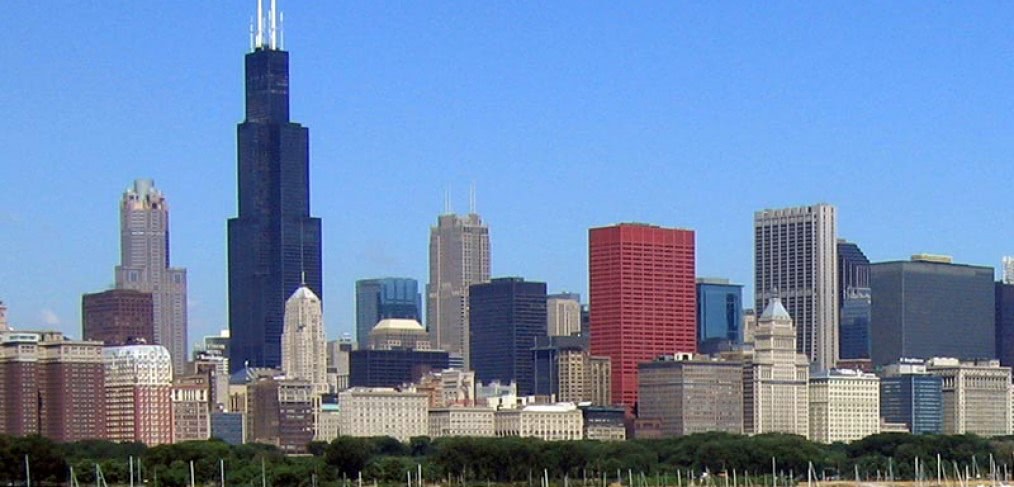
Revitalizing Chicago’s Loop (Part 1)
RTKL Vice President Keith Campbell lives, works and sent his kids to public schools in Chicago. In this two-part series, he discusses how changes to downtown have affected the quality of city schools – and what can be done to continue to attract and retain the creative class.
As a Chicago city dweller, it has always bugged me to hear some otherwise intelligent parent remark that they live in the suburbs “for the sake of the kids.” When you’ve got a world class symphony, opera, museum campus, beach, five professional sports teams (yes, I’m counting the Cubs), the Burnham Plan and the world’s most celebrated collection of modern architecture, why on earth would anyone live in the suburbs?
Unfortunately, there’s a fairly good reason why: Chicago’s public schools. Over the years, they have declined, if not only in quality then certainly in reputation.
The quality of schools in the city hasn’t always been bad. When American writer Saul Bellow was growing up in Chicago, his local elementary school was stocked with young, inspiring, energetic teachers. The buildings themselves were equally inspired, accomodated large populations of students and were designed by some of the most revered architects of the day.

Carl Schurz High School, designed by Dwight Perkins, is an example of exceptional educational facility architecture in Chicago.
[pullquote]As Chicago neighborhoods grew, they were frequently shaped by the presence of large, architecturally significant schools with equally significant public spaces and playgrounds.[/pullquote]
The spectacular Prairie-style Schurz High School, for example, designed by Dwight Perkins, linked the development of schools with neighborhood parks, (including one Jens Jensen-designed park nearby) and anchored an entire working class immigrant neighborhood with a model of urbanism, circa 1910.
Schurz wasn’t the only one. As Chicago neighborhoods grew, they were frequently shaped by the presence of large, architecturally significant schools with equally significant public spaces and playgrounds. Always an ethnically diverse city, Chicago neighborhoods were largely defined by their schools, parishes, and accents, always with the ever-present Chicago grid as a backdrop.
So what changed? It began with the decline of residential populations close to the city’s central business district, the Loop. As growing numbers of businesses set up shop in the 60’s, housing became scarce, replaced by high-rise buildings and entertainment venues. The Loop began to suffer a long period of decline; although it was active during the work day, after hours it became like a ghost town, as white-collar workers returned to their bedroom communities in the north and western suburbs.
As residential populations declined in closer proximity to the Loop, the number of schools became fewer too. The South Side evolved into a primarily African-American community, and due to long standing divisiveness and segregation between races, became largely neglected from a services and infrastructure standpoint. In the 60’s and 70’s the Loop was a mess.[pullquote]Even during this period of dramatic change and growth, the schools still suffered.[/pullquote]
Fortunately, the situation changed again in the 90s. Local and regional economic drivers transformed Chicago from a city of stockyards and manufacturers to a service-based economy with an emerging creative class. Recognizing the civic values of a new, younger Loop population, Mayor Richard M. Daley focused on becoming America’s greenest mayor, installing a green roof on city hall, mandating landscaping attributes in new construction, and in a truly inspired move, drove the design and construction of America’s most compelling new public space: Millennium Park.
Solid cultural institutions, the gorgeous lakefront, a spiffy new park, available credit, and consistently rising Chicago housing values led to a boom in downtown construction in the 90s. An unprecedented number of high rise condominium buildings were built in in the Loop, the Near North side, and the South Loop, with mid–rise residential and restaurants defining the new West Loop identity. According to the 2010 census, the population of the Loop increased by 78.7% from 2000 to 2010.[pullquote]Even during this period of dramatic change and growth, the schools still suffered. They were still tarnished by years of urban flight. [/pullquote]
Even during this period of dramatic change and growth, the schools still suffered. They were still tarnished by years of urban flight. Young urban professionals (including me, back in the day) loved the energy and amenities downtown offered but became nervous about the perceived lack of quality public schools. Those without the commitment to seeking housing in neighborhoods with good a Chicago Public School quickly fled to the security of suburban school systems, making the problem worse in the process. A downward spiral of dwindling school age children and a citywide reluctance to properly staff and maintain school buildings made the situation look dire.
In recent years, this bleak outlook has begun to change, and we’re seeking some encouraging signs of a new energy in public schools similar to what existed in Saul Bellows’ days. Not only that, but there is hope that circumstances will continue to change with the right investment and some creative rebuilding.
Find out how Chicago Public Schools are changing today, and how Keith recommends sustaining those changes in the next installment of his blog series.
Images (top to bottom): © Ronald C. Saari; © Joe Drogas; SkyscraperPageForum; CTBUH



One comment